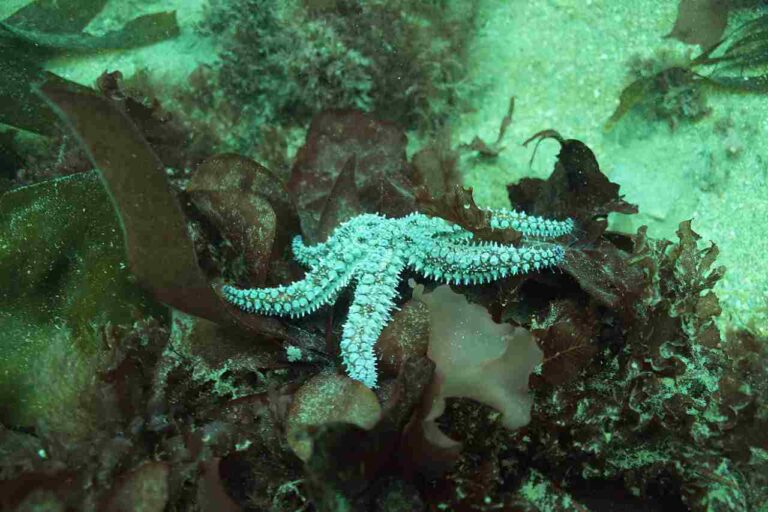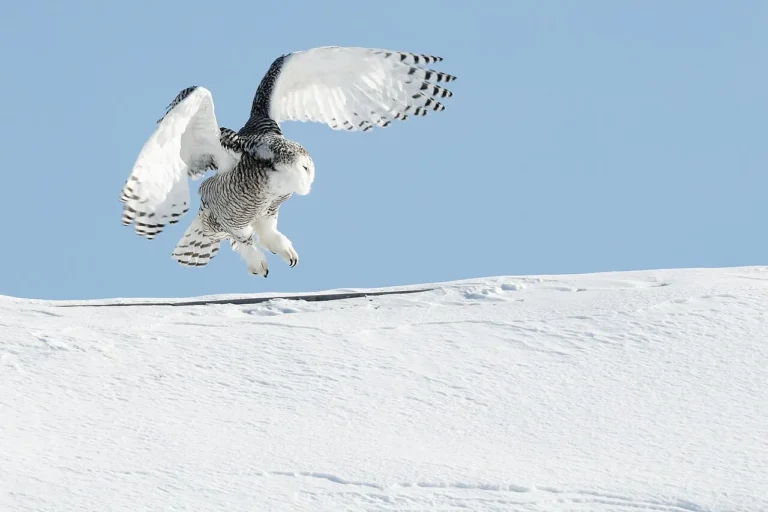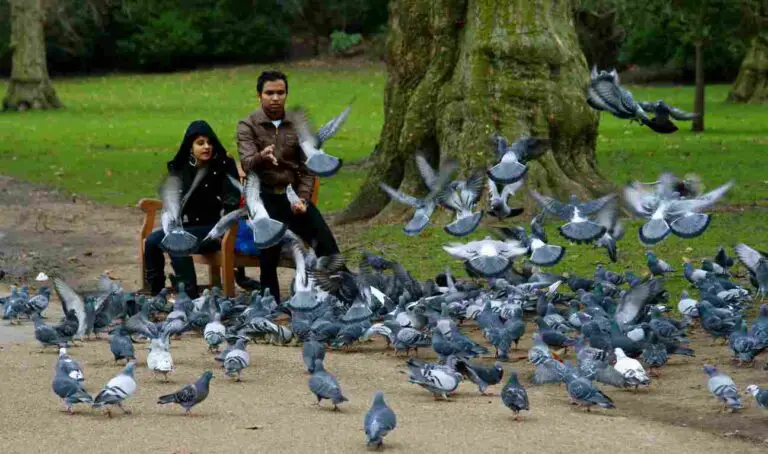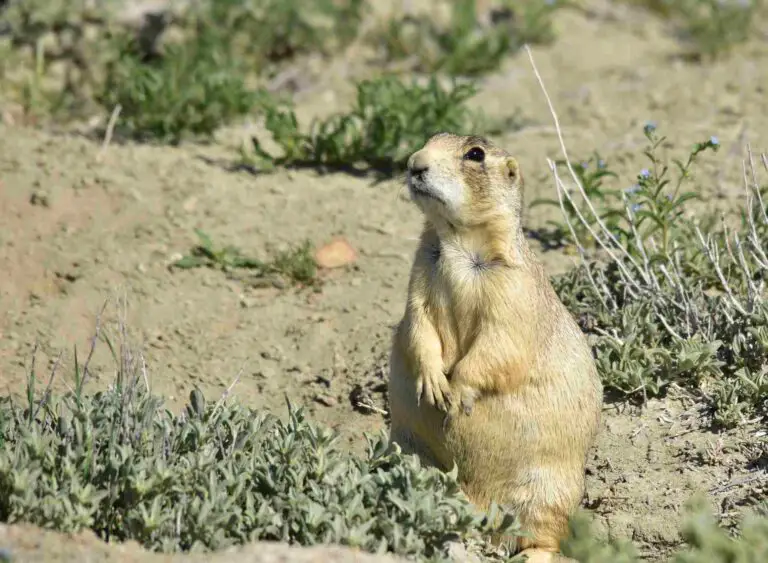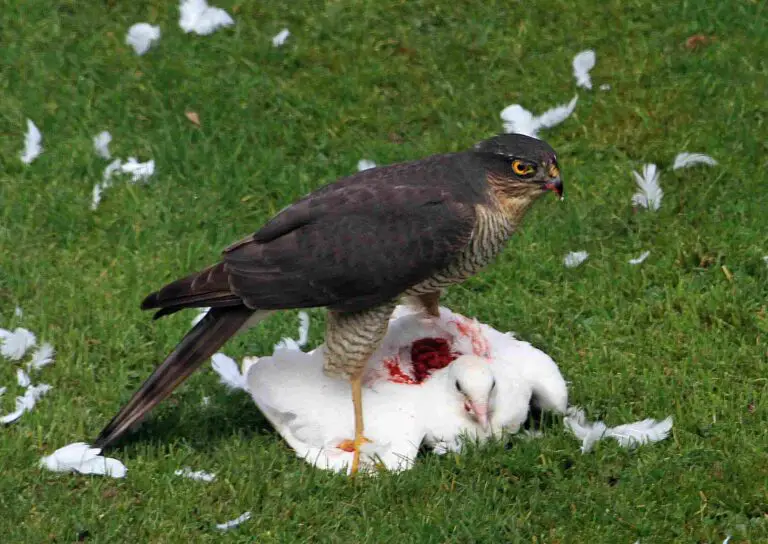Is a Bird a Consumer? Exploring the Consumer Status and Role of Birds
A bird is a consumer in the ecosystem and food chain, because it is not able to manufacture its own food, but must feed on other organisms or their derivatives, to gain the required nutrients and energy for its survival.
This article discusses the consumer role of birds and its implications, while answering questions on the topic.
Is a Bird a Producer?
A bird is not a producer because it cannot manufacture its own food or biomass from inorganic resources like sunlight, carbon dioxide, or water. Unlike plants and some bacteria, birds are not autotrophic organisms capable of photosynthesis or chemosynthesis. Instead, they rely on consuming other organisms or their derivatives to obtain the necessary nutrients and energy for their survival.
Birds have physiological features that differ from those of producers. For example, they have a digestive system adapted for breaking down and absorbing complex organic molecules found in their prey. This includes specialized beaks, digestive enzymes, and a well-developed gastrointestinal tract. These adaptations allow birds to extract the nutrients they need from the organisms they consume.
Many birds are classified as primary consumers because they predominantly feed on producers such as plants, seeds, fruits, and nectar. They play a crucial role in the ecosystem by dispersing seeds and pollinating flowers as they feed. Primary consumer birds are often relatively small in size and lack the typical predatory features of raptors, such as sharp talons and beaks.
While some birds may feed on primary consumers, such as insects or small mammals, they are not classified as secondary consumers by default. The classification of birds as secondary consumers depends on factors such as their relative size, the scale of trophic cascading effect, and the type and size of their prey.
Reasons Why a Bird is NOT a Producer
1. Birds are Not Autotrophic
Birds are not autotrophic, meaning they cannot manufacture their own food. This is a fundamental characteristic that sets them apart from producers in the ecosystem. Unlike plants and some microorganisms, birds do not possess the ability to carry out photosynthesis or chemosynthesis to produce their own energy-rich molecules. Instead, they rely on external sources for their nutritional needs.
One of the main reasons why birds are not autotrophic is their lack of specialized structures for photosynthesis. Unlike plants, which have chlorophyll-containing cells in their leaves, birds do not possess any structures that can convert sunlight into usable energy. This absence of photosynthetic machinery limits their ability to produce their own food.
Furthermore, birds lack other physiological features that are characteristic of producers. For example, they do not have roots to absorb water and nutrients from the soil, nor do they have leaves for gas exchange and photosynthesis. Additionally, birds do not possess flagella or other structures that would allow them to move towards or away from light sources, which is another key characteristic of autotrophs.
Instead of producing their own food, birds acquire energy and nutrients by consuming other organisms. They are classified as consumers because they rely on external sources, such as plants, insects, seeds, fruits, and even other animals, to meet their nutritional requirements. Birds have evolved a wide range of feeding strategies and beak shapes to adapt to different food sources, highlighting their role as consumers in various ecosystems.
2. Physiological Features of Birds Differ from Those of Producers
One of the key reasons why birds are not considered producers in the ecosystem is their distinct physiological features that set them apart from autotrophs. Unlike plants and some microorganisms, birds lack certain structures and characteristics necessary for photosynthesis and other autotrophic processes.
Firstly, birds do not possess roots, which are essential for plants to absorb water and nutrients from the soil. This absence of root systems limits their ability to directly extract resources from their environment, making them reliant on external sources for their nutritional needs. Instead of absorbing nutrients from the soil, birds acquire them by consuming other organisms, such as plants and insects.
Secondly, birds lack leaves, which are crucial for gas exchange and photosynthesis in plants. Leaves contain chlorophyll, a pigment that captures sunlight and converts it into energy-rich molecules through photosynthesis. Without leaves, birds are unable to harness sunlight and convert it into usable energy. This further reinforces their dependence on external sources for sustenance.
Additionally, birds do not possess flagella or other structures that allow them to move towards or away from light sources. This is another key characteristic of autotrophs, as they can position themselves to maximize their exposure to sunlight for photosynthesis. The absence of such structures in birds further highlights their inability to produce their own food through photosynthesis.
In general, the physiological features of birds differ significantly from those of producers. Birds lack roots, leaves, flagella, and chlorophyll, which are essential for autotrophic processes. These characteristics limit their ability to manufacture their own food and energy-rich molecules. Instead, birds rely on consuming other organisms to meet their nutritional requirements, classifying them as consumers in the ecosystem.
3. Many Birds Feed on Producers
One of the reasons why birds are not considered producers in the ecosystem is because many of them feed on producers. This means that birds occupy a higher trophic level in the food chain, as they consume plants and other autotrophic organisms.
Birds that feed on producers are known as herbivorous birds. They have specialized beaks and digestive systems that allow them to efficiently extract nutrients from plant matter. These birds play an important role in controlling plant populations and shaping the structure of ecosystems. By consuming producers, they help to regulate plant growth and prevent overpopulation.
Herbivorous birds can be found in various habitats, from forests to grasslands to wetlands. They have adapted to feed on different types of plants, including seeds, fruits, leaves, and nectar. Some examples of herbivorous birds include finches, sparrows, and hummingbirds.
By feeding on producers, birds contribute to the transfer of energy and nutrients through the food chain. They convert the energy stored in plants into their own biomass, which can then be passed on to other organisms when they are consumed by predators or scavengers.
4. Birds Acquire Energy and Nutrients by Consuming Other Organisms
Birds acquire energy and nutrients by consuming other organisms, which is one of the main reasons why they are not considered producers in the ecosystem. Unlike autotrophic organisms that can produce their own food through photosynthesis or chemosynthesis, birds rely on consuming other organisms to obtain the energy and nutrients they need to survive.
As consumers, birds play a crucial role in the food chain by transferring energy and nutrients from one trophic level to another. They act as intermediaries between producers and higher-level consumers, such as predators. When birds consume other organisms, they break down the organic matter and extract the energy stored within it. This energy is then used for their own metabolic processes, growth, and reproduction.
Birds have evolved various feeding strategies and adaptations to acquire energy and nutrients from different sources. Some birds are carnivorous, feeding on other animals such as insects, fish, or small mammals. Others are omnivorous, consuming a combination of plant matter and animal prey. There are also scavenger birds that feed on carrion, playing an important role in the decomposition process.
Are Birds Primary Consumers?
Some birds are primarily herbivorous and can be classified as primary consumers. These birds, such as geese, parrots, hummingbirds, and sparrows, have a diet that is predominantly composed of buds, nuts, seeds, nectar, tendrils, and other plant-derived materials. They play a crucial role in the ecosystem by consuming plant matter and transferring energy and nutrients from plants to higher trophic levels.
However, it is important to note that very few birds are exclusively herbivorous. While they may primarily consume plant material, they often supplement their diet with other food sources such as insects, mollusks, annelids, crustaceans, and even fish. This makes them mostly omnivorous and opportunistic in their feeding habits.
Birds that are classified as primary consumers have adaptations that allow them to efficiently consume and digest plant material. For example, geese have specialized bills that are adapted for grazing on grasses and other vegetation. Parrots have strong beaks that can crack open nuts and seeds, while hummingbirds have long, slender beaks that are perfectly suited for sipping nectar from flowers.
In addition to their feeding habits, the size of primary consumer birds is often relatively small compared to other bird species. This is because their diet consists mainly of plant material, which typically requires less energy to acquire compared to hunting and capturing prey. Their smaller size also allows them to navigate through dense vegetation and access food sources that may be inaccessible to larger birds.
Another characteristic of primary consumer birds is that they lack the typical predatory features of raptors. Raptors, such as eagles and hawks, have sharp talons and beaks that are adapted for capturing and killing prey. In contrast, primary consumer birds have beaks and claws that are better suited for gathering and processing plant material.
Characteristics of Birds that are Classified as Primary Consumers
1. They are Predominantly Herbivorous
Birds that are classified as primary consumers are predominantly herbivorous, but not all solely herbivorous. This characteristic distinguishes them as primary consumers in the food chain. While some birds may consume a variety of food sources, including insects and small animals, primary consumer birds primarily rely on plant material for their sustenance.
One reason why primary consumer birds are predominantly herbivorous is due to their physiological features. Their beaks and digestive systems are adapted for processing plant matter, such as seeds, fruits, and vegetation. These birds have specialized beaks that allow them to efficiently extract and consume plant material. Their digestive systems are also designed to break down and extract nutrients from plant matter.
Another factor that contributes to the classification of birds as primary consumers is their size. Primary consumer birds are often relatively small in size compared to secondary and tertiary consumers. This size difference is advantageous for feeding on plant material, as it requires less energy to obtain and process compared to hunting and consuming larger prey.
Additionally, primary consumer birds lack the typical predatory features of raptors. They do not possess sharp talons or strong beaks for capturing and killing prey. Instead, their beaks are adapted for grasping and manipulating plant material. This further supports their classification as primary consumers.
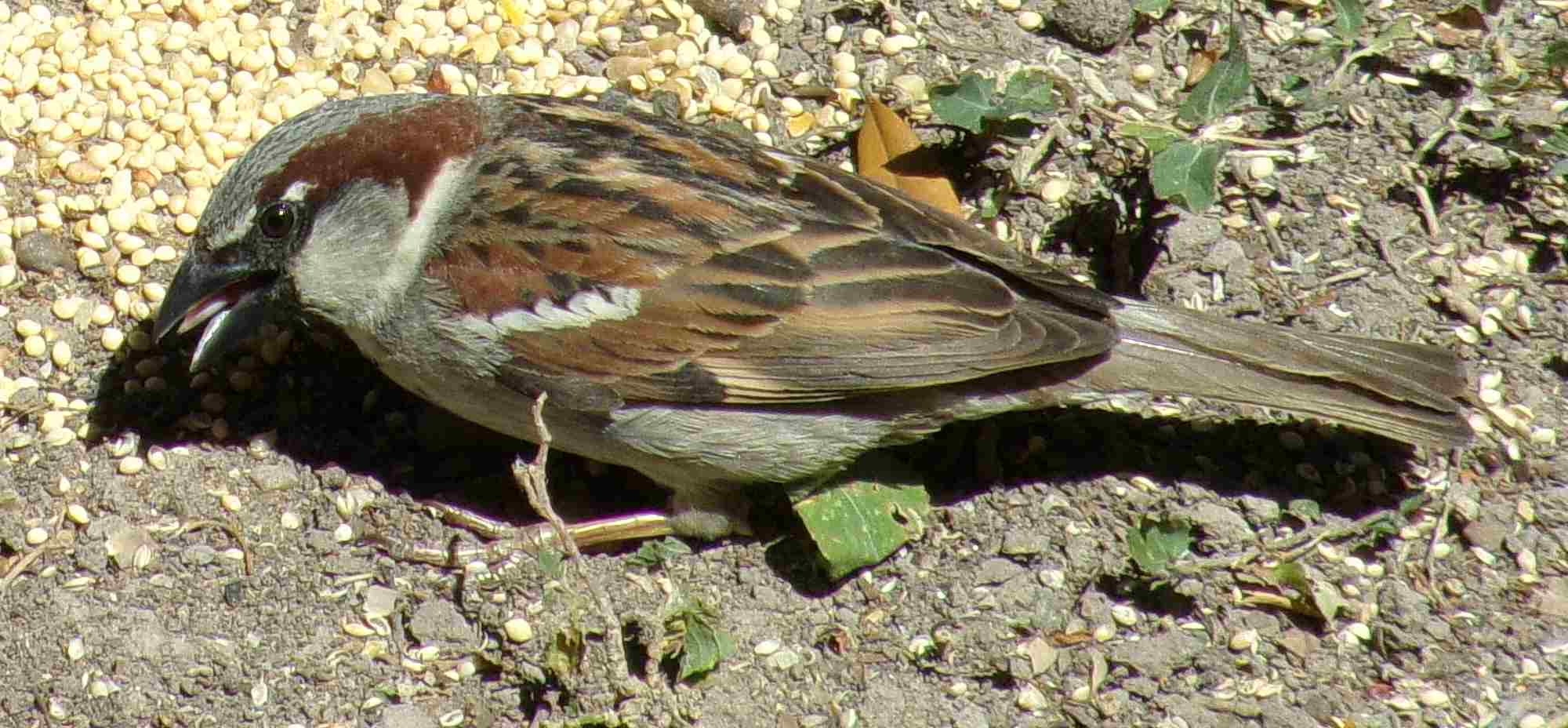
2. Primary Consumer Birds are Often Relatively Small in Size
Primary consumer birds are often relatively small in size compared to secondary, tertiary, and quaternary consumers, which are often predominantly carnivorous or predatory. This size difference is a distinguishing characteristic of birds that can be classified as primary consumers.
The smaller size of primary consumer birds provides them with certain advantages in their feeding habits. Firstly, their smaller bodies require less energy to sustain, allowing them to thrive on the lower energy content of plant material. This makes them well-suited for consuming a diet primarily composed of plant matter. Additionally, their smaller size enables them to access and navigate through dense vegetation more easily, where they can find abundant sources of plant food.
The smaller size of primary consumer birds also affects their foraging behavior. These birds are often agile and nimble, able to move quickly and efficiently through their environment in search of food. Their small size allows them to exploit niches and resources that may be inaccessible to larger predators. For example, they can feed on the tender shoots and leaves of plants that are not easily reached by larger herbivores.
Furthermore, the smaller size of primary consumer birds reduces their vulnerability to predation. Their diminutive stature makes them less conspicuous and less likely to attract the attention of larger predators. This allows them to forage and feed without constant fear of being hunted. However, they still need to remain vigilant and employ various strategies to avoid becoming prey themselves.
3. They Lack the Typical Predatory Features of Raptors
Primary consumer birds, in contrast to raptors and other predatory birds, lack the typical predatory features such as a specialized beak, talons, a very broad wingspan, and keen sight. These characteristics are adaptations that enable predatory birds to effectively capture and kill their prey. However, primary consumer birds have evolved different physiological features that are more suited to their herbivorous diet and foraging habits.
One distinguishing feature of primary consumer birds is their beak structure. Unlike raptors, which have sharp, hooked beaks for tearing flesh, primary consumer birds have beaks that are adapted for consuming plant material. Their beaks are often shorter and more rounded, allowing them to efficiently gather and process seeds, fruits, and other plant parts. This specialized beak structure enables them to extract nutrients from plant matter and digest it effectively.
Additionally, primary consumer birds do not possess the strong talons that are characteristic of predatory birds. Instead, their feet are adapted for perching and grasping branches or stems while they feed. This adaptation allows them to securely hold onto plants while they extract food, such as plucking seeds or stripping leaves. Their feet are not designed for capturing and immobilizing prey like the talons of raptors.
Furthermore, primary consumer birds generally have a smaller wingspan compared to predatory birds. Raptors have broad wings that enable them to soar and cover large distances in search of prey. In contrast, primary consumer birds have wings that are more suited for maneuvering through dense vegetation and short-distance flights. Their wings are adapted for quick takeoffs and agile movements, allowing them to navigate their environment and access food sources efficiently.
Are Birds Secondary Consumers?
Some birds can be classified as secondary consumers due to their predatory habits, and the presence of larger or more formidable predatory birds within the same ecosystem or habitat. This classification is based on the fact that these birds feed on other organisms, which places them higher in the food chain. Examples of birds that can be classified as secondary consumers include the brown skua, African crow, barn owl, merlin, sharp-shinned hawk, and American kestrel. These birds exhibit predatory behavior and actively hunt and consume other animals as their primary source of food.
The prey for these secondary consumer birds may include amphibians, snakes, lizards, smaller birds, and small mammals like rodents. By consuming these organisms, the secondary consumer birds obtain energy and nutrients, contributing to the transfer of energy through the food chain. Their predatory habits play a crucial role in regulating populations of their prey species and maintaining the balance within the ecosystem.
It is important to note that not all birds can be classified as secondary consumers. The classification depends on various factors such as the bird’s size, the scale of trophic cascading effect, and the type and size of prey they consume. Birds that primarily feed on producers, such as seeds, fruits, or nectar, are more likely to be classified as primary consumers. However, certain bird species have adapted to a predatory lifestyle, making them secondary consumers in their respective ecosystems.
Factors that Determine the Classification of Birds as Secondary Consumers
1. Relative Size
When considering the classification of birds as secondary consumers, one important factor to take into account is their relative size. This characteristic can play a significant role in determining whether a bird falls into the category of secondary consumers or not.
The relative size of a bird can be a determining factor in its classification as a secondary consumer. Smaller predatory birds are more likely to rely on primary consumers as their main source of food. By consuming these organisms, they obtain the energy and nutrients necessary for their survival.
In contrast, larger predatory birds like eagles or hawks have the ability to hunt and consume other animals directly. Their size and physical adaptations, such as sharp talons and beaks, enable them to capture and feed on larger prey, including other birds or mammals. These characteristics make them more likely to be classified as tertiary consumers.
2. Scale of Trophic Cascading Effect
The scale of the trophic cascading effect is another important factor to consider when classifying birds as secondary consumers. This concept refers to the impact that the consumption of one organism has on the entire food chain.
Birds that occupy a higher trophic level, such as secondary consumers, play a crucial role in regulating the populations of their prey and maintaining the balance of ecosystems. Their feeding habits can have a cascading effect on the abundance and distribution of organisms at lower trophic levels.
When a bird consumes primary consumers, it reduces the population of these organisms. This, in turn, can lead to an increase in the population of producers, as there are fewer primary consumers feeding on them. The increase in producer populations can then have a cascading effect on the entire ecosystem, affecting the abundance and diversity of other organisms.
The scale of the trophic cascading effect is influenced by various factors, including the size and abundance of the secondary consumer population. Larger populations of secondary consumers can have a more significant impact on the trophic structure of an ecosystem compared to smaller populations.
3. Type and Size of Prey
The type and size of prey that a bird consumes is a crucial factor in determining its classification as a secondary consumer. Birds that primarily feed on biologically simpler and physically smaller prey are more likely to be classified as secondary consumers.
When a bird preys on organisms lower in the food chain, such as insects or small fish, it is consuming primary consumers. These primary consumers obtain their energy and nutrients directly from producers, such as plants or algae. By consuming primary consumers, the bird occupies a higher trophic level and becomes a secondary consumer.
The size of the prey also plays a role in classifying a bird as a secondary consumer. Larger birds that prey on larger organisms, such as small mammals or reptiles, are more likely to be classified as secondary consumers. These larger prey species often occupy a higher trophic level themselves, feeding on primary consumers or even other secondary consumers.
The type and size of prey can also influence the trophic cascading effect within an ecosystem. When a bird consumes larger prey, it has the potential to impact the populations of multiple trophic levels. For example, if a bird preys on a small mammal that feeds on primary consumers, it can indirectly affect the abundance and distribution of both primary consumers and producers.
Examples of Birds that Can be Classified as Tertiary Consumers
Examples of birds that can be classified as tertiary consumers are the harpy eagle, bald eagle, peregrine falcon, and Blakiston’s fish owl. These predatory birds play a crucial role in their respective ecosystems, as they occupy the highest trophic level and have a significant trophic cascading impact on the food chain.
The harpy eagle, found in the tropical rainforests of Central and South America, is one such example. With its powerful build and sharp talons, the harpy eagle preys on a variety of animals, including monkeys, sloths, and small mammals. By consuming these secondary consumers, the harpy eagle regulates their populations and indirectly influences the abundance and distribution of primary consumers and producers in the ecosystem.
Similarly, the bald eagle, a symbol of the United States, is known for its impressive hunting skills. Found near bodies of water, such as lakes and rivers, the bald eagle primarily feeds on fish. It swoops down from the sky, using its sharp beak and talons to catch its prey. By consuming fish, which are secondary consumers in aquatic ecosystems, the bald eagle helps maintain the balance of the food chain and the overall health of the ecosystem.
The peregrine falcon is another bird that can be classified as a tertiary consumer. Known for its incredible speed and agility, the peregrine falcon is considered one of the fastest animals on Earth. It preys on a variety of birds, including pigeons, ducks, and small songbirds. By hunting these secondary consumers, the peregrine falcon helps control their populations and influences the abundance of primary consumers, such as insects and small mammals, which are part of the falcon’s diet indirectly.
Blakiston’s fish owl, found in the forests of Russia, China, and Japan, is one of the largest owl species in the world. It primarily feeds on fish, but it also preys on other birds, small mammals, and amphibians. As a tertiary consumer, the Blakiston’s fish owl plays a vital role in regulating the populations of its prey and maintaining the balance of the ecosystem.
It is important to note that not all large birds are classified as tertiary consumers. Some large birds, like the turkey vulture, are considered secondary consumers. Turkey vultures are scavengers and primarily feed on carrion, or dead animals. While they play an important role in cleaning up the environment by consuming decaying matter, their feeding habits make them secondary consumers rather than tertiary consumers.
Are Birds Primary or Secondary Consumers?
The classification of birds as primary or secondary consumers depends on various factors, such as food availability and the presence and characteristics of other birds in their ecosystem. Some birds may fall into either or both of these consumer levels.
Certain bird species, like ducks, parrots, and geese, are predominantly herbivorous and feed on plants and seeds. These birds are considered primary consumers as they directly consume producers. They play a crucial role in the ecosystem by controlling plant populations and dispersing seeds through their feeding habits.
On the other hand, there are highly opportunistic birds, like crows, that have a varied diet and can adapt to different food sources. These birds can be classified as either primary or secondary consumers depending on the availability of food. When they primarily feed on plants, fruits, and seeds, they function as primary consumers. However, when they consume other animals, such as insects, small mammals, or even other birds, they act as secondary consumers.
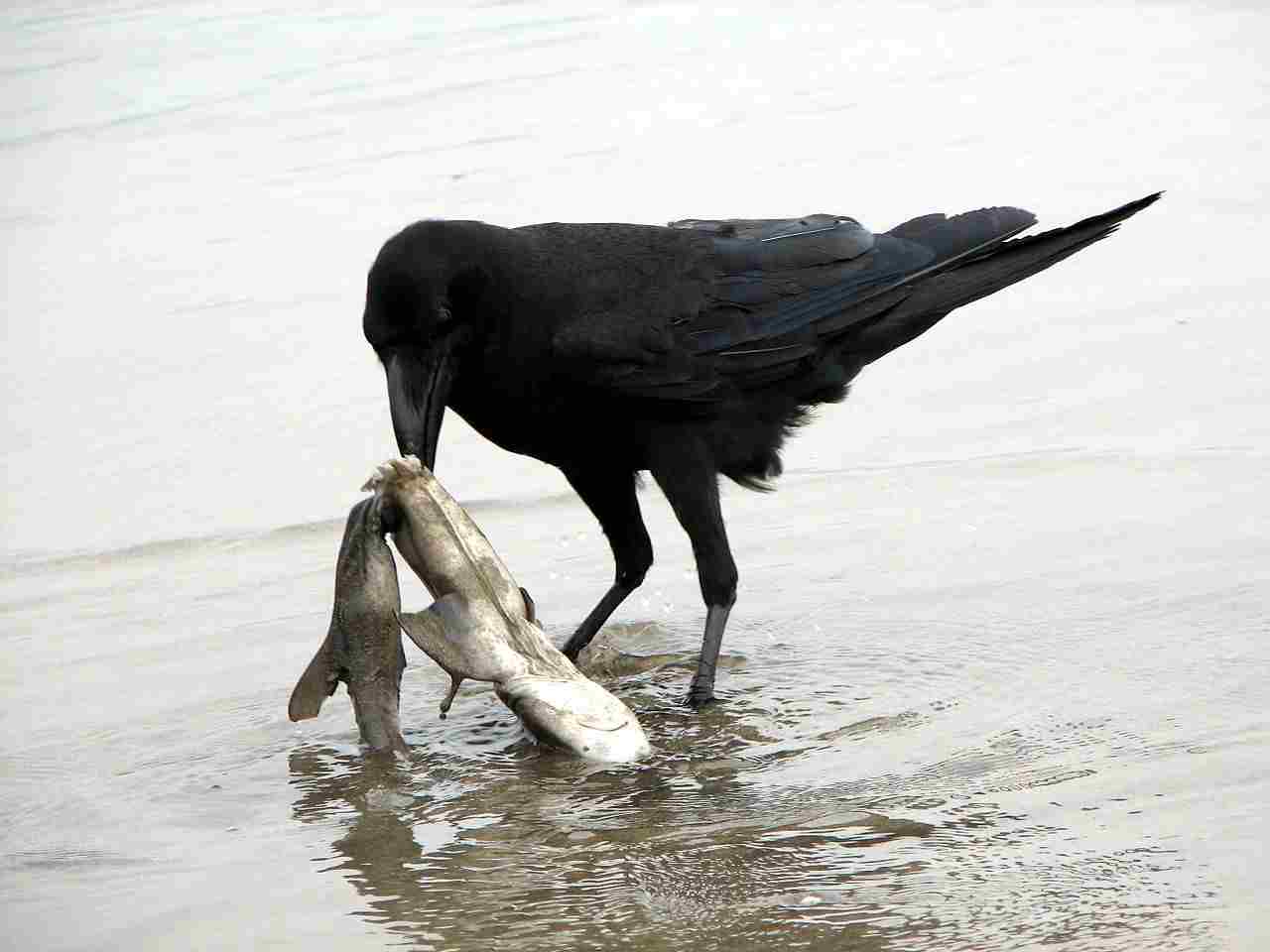
Is a Bird a Consumer, Producer or Decomposer?
A bird is primarily a consumer, as it obtains its energy and nutrients by consuming other organisms. Unlike producers, birds are not autotrophic and cannot produce their own food through photosynthesis. As discussed in earlier sections, there are several reasons why birds are not classified as producers.
Firstly, birds lack the physiological features necessary for photosynthesis. They do not possess chloroplasts or other specialized structures that enable them to convert sunlight into energy. Instead, birds rely on external food sources to meet their energy requirements.
Secondly, the physiological features of birds differ significantly from those of producers. Producers, such as plants, have adaptations that allow them to absorb and utilize sunlight, water, and nutrients from the environment. Birds, on the other hand, have evolved specialized digestive systems and beaks that enable them to consume and process a wide variety of foods.
Additionally, many bird species feed on producers, such as seeds, fruits, and nectar. They play an important role in seed dispersal and pollination, but they do not contribute to the production of these resources. Instead, they rely on the energy and nutrients provided by the producers they consume.
While birds are primarily consumers, there are some exceptions to this generalization. Certain birds, like vultures, can contribute to the decomposition process by scavenging on the remains of dead organisms. However, it is important to note that vultures are not decomposers in the same way as saprophytes or detritivores. They do not break down organic matter themselves but rather feed on the already decomposed remains of dead animals.
FAQs
1. Are Birds Consumers?
Yes, birds are consumers. They cannot produce their own food, so they rely on consuming other organisms for energy and nutrients. This makes them part of the consumer category in the food chain.
Birds have a diverse diet, depending on their species and habitat. Some birds are herbivores, consuming plants, seeds, and fruits. Others are carnivores, feeding on insects, small mammals, or other birds. There are also omnivorous birds that eat a combination of plants and animals.
Birds play an important role in maintaining the balance of ecosystems. As consumers, they help control populations of their prey, preventing overpopulation and maintaining biodiversity. For example, birds that feed on insects can help control pest populations in agricultural areas.
In addition to their role as consumers, birds also contribute to seed dispersal and pollination. When birds consume fruits or nectar, they may inadvertently transport seeds or pollen to different locations, aiding in the reproduction and distribution of plants.
Overall, birds are an integral part of the consumer network in ecosystems. Their feeding habits and interactions with other organisms contribute to the overall functioning and stability of natural systems.
2. Is a Chicken a Consumer?
Yes, a chicken is indeed a consumer. Like other birds, chickens rely on consuming other organisms for their energy and nutrient needs. They are omnivorous creatures, meaning they have a diverse diet that includes both plant and animal matter.
In terms of their diet, chickens may consume grains, insects, worms, and other available food sources. They have a unique ability to peck and scratch the ground, allowing them to find and consume a variety of food items. This omnivorous diet provides them with the necessary nutrients to thrive and grow.
Chickens play an important role in the food chain as consumers. They contribute to the overall balance of ecosystems by controlling populations of insects and other small organisms. Additionally, chickens are often raised for their meat and eggs, making them an important source of food for humans.
3. Is Eagle a Consumer?
Yes, an eagle is indeed a consumer. As a carnivorous predatory bird, eagles rely on consuming other organisms for their survival. They are at the top of the food chain and play a crucial role in maintaining the balance of ecosystems.
Eagles primarily feed on fish, but they are opportunistic hunters and will also consume small mammals, birds, and reptiles. Their sharp talons and powerful beaks enable them to catch and kill their prey with precision and efficiency.
In addition to being skilled hunters, eagles are also scavengers. They will feed on carrion, taking advantage of any available food source. This adaptability allows them to survive in various environments and ensures their continued existence.
Eagles are considered apex predators, meaning they have no natural predators themselves. Their presence in an ecosystem helps regulate the populations of their prey species, preventing overpopulation and maintaining the overall health of the ecosystem.
4. Is a Bird a Primary Consumer?
Birds can indeed be considered primary consumers in certain cases. Some bird species, such as hummingbirds, ducks, and parrots, primarily consume plant material as their main source of food. These birds play a crucial role in the ecosystem as they help in pollination and seed dispersal.
Hummingbirds, for example, have long beaks and tongues that allow them to extract nectar from flowers. In the process, they inadvertently transfer pollen from one flower to another, aiding in the reproduction of plants. Ducks, on the other hand, feed on aquatic plants, algae, and seeds, contributing to the dispersal of plant seeds through their droppings.
Parrots are known for their ability to crack open nuts and consume fruits, seeds, and even flowers. By doing so, they assist in seed dispersal and contribute to the growth and regeneration of plant species.
While not all bird species are primary consumers, those that primarily feed on plant material play a vital role in maintaining the balance of ecosystems. Their feeding habits and interactions with plants have a direct impact on the distribution and abundance of plant species, making them an essential part of the food web.
5. Is a Bird a Secondary Consumer?
Birds can indeed be classified as secondary consumers in certain cases. The classification as a secondary consumer depends on the bird’s feeding habits and its position in the food chain.
Some predatory birds, such as kestrels, which are smaller than eagles, are considered secondary consumers. These birds prey on animals like rodents, reptiles, and other birds.
On the other hand, there are non-predatory birds that are also classified as secondary consumers. Birds like vultures primarily feed on carrion, which includes the remains of dead animals.
6. Is a Bird a Tertiary Consumer?
When considering the classification of birds as tertiary consumers, it is important to examine the feeding habits of certain species. One example of a bird that can be classified as a tertiary consumer is the harpy eagle.
Harpy eagles are large raptors that inhabit the rainforests of Central and South America. These majestic birds primarily feed on small to medium-sized mammals, such as sloths and monkeys. By preying on these animals, the harpy eagle occupies a position at the top of the food chain, making it a tertiary consumer.
As a tertiary consumer, the harpy eagle plays a crucial role in regulating the population of its prey species. By controlling the population of smaller mammals, the harpy eagle helps to maintain the balance of the ecosystem in which it resides.
7. What Type of Consumer is a Hawk?
Hawks are fascinating birds of prey that exhibit carnivorous feeding habits. They play a crucial role in the ecosystem as top predators, but their classification as either secondary or tertiary consumers depends on various factors, including food availability and the presence of other predatory birds.
As carnivores, hawks primarily feed on small mammals, birds, reptiles, and even insects. Their sharp talons and keen eyesight enable them to hunt and capture their prey with precision. Hawks are known for their exceptional hunting skills and agility in flight, making them formidable predators in their habitats.
The classification of hawks as secondary or tertiary consumers is influenced by their position in the food chain. In some ecosystems, where hawks have a diverse range of prey options, they may occupy the role of secondary consumers. This means that they feed on primary consumers, such as small mammals or birds.
However, in ecosystems where hawks have limited prey options or face competition from other predatory birds, they may function as tertiary consumers. As tertiary consumers, hawks feed on secondary consumers, which are organisms that consume primary consumers.
8. Is a Bird a Herbivore?
While most birds are not exclusive herbivores, there are some whose diet is dominantly herbivorous. Toucans and parrots, for example, have diets that include a significant amount of plant material. These birds have specialized beaks and digestive systems that allow them to consume and process fruits, seeds, and even leaves.
However, it is important to note that the majority of birds are omnivores. They have a varied diet that consists of both plant and animal matter. This adaptability allows them to thrive in different environments and take advantage of available food sources. For instance, many bird species feed on insects, worms, and small mammals, in addition to consuming fruits, nectar, and seeds.
The classification of birds as herbivores, omnivores, or carnivores depends on their specific feeding behaviors and preferences. While some birds have a predominantly herbivorous diet, the majority exhibit a more flexible approach to their food choices. This versatility in diet is one of the reasons why birds are such successful and adaptable creatures in various ecosystems.
9. Is a bird a primary secondary or tertiary consumer?
Birds can be classified as primary, secondary, or tertiary consumers depending on various factors such as their size, adaptation, food availability, and the presence of other consumers in the same food chain.
In terms of size, larger birds such as eagles and hawks are more likely to be tertiary consumers. These birds are often at the top of the food chain and feed on smaller animals like rodents, fish, and even other birds. Their position as tertiary consumers is a result of their ability to hunt and consume other consumers.
On the other hand, smaller birds like sparrows and finches are typically primary consumers. They primarily feed on plant material such as seeds, fruits, and nectar. These birds play an important role in dispersing seeds and pollinating plants, making them essential for the ecosystem.
However, it’s important to note that not all birds fit neatly into these categories. Some birds may exhibit a combination of feeding behaviors, consuming both plant and animal matter. This adaptability allows them to occupy different positions in the food chain depending on the availability of food sources.
10. Is a Chicken a Primary Consumer?
Yes, a chicken can be classified as a primary consumer. Chickens have a preference for plant-derived food materials like grains, making them primary consumers in the food chain. They primarily feed on seeds, grains, and other plant matter, which are their main sources of nutrition. Chickens play an important role in the ecosystem as they help in seed dispersal through their feeding habits.
Chickens are domesticated birds that have been selectively bred for centuries to be efficient consumers of plant material. They have a specialized digestive system that allows them to efficiently break down and extract nutrients from plant-based foods. This adaptation makes them well-suited for consuming and digesting grains and other plant materials.
In addition to their primary consumer status, chickens also exhibit some omnivorous tendencies. They may consume small insects, worms, and even small vertebrates if given the opportunity. However, their primary diet consists of plant-based materials, which classifies them as primary consumers.
Conclusion
* Birds can be classified as consumers, with different types of birds occupying different positions in the food chain.
* Chickens, for example, are considered primary consumers as they primarily feed on plant-based materials such as grains and seeds.
* Eagles, on the other hand, are secondary consumers as they feed on smaller animals like fish and rodents.
* Hawks, specifically, are tertiary consumers as they prey on other birds and small mammals.
* Birds, in general, play important roles in ecosystems through their feeding habits and interactions with other organisms.
* While some birds are herbivores, consuming only plant-based materials, others exhibit omnivorous tendencies and may consume both plants and animals.
* Overall, birds contribute to the balance and functioning of ecosystems as consumers at various levels in the food chain.
